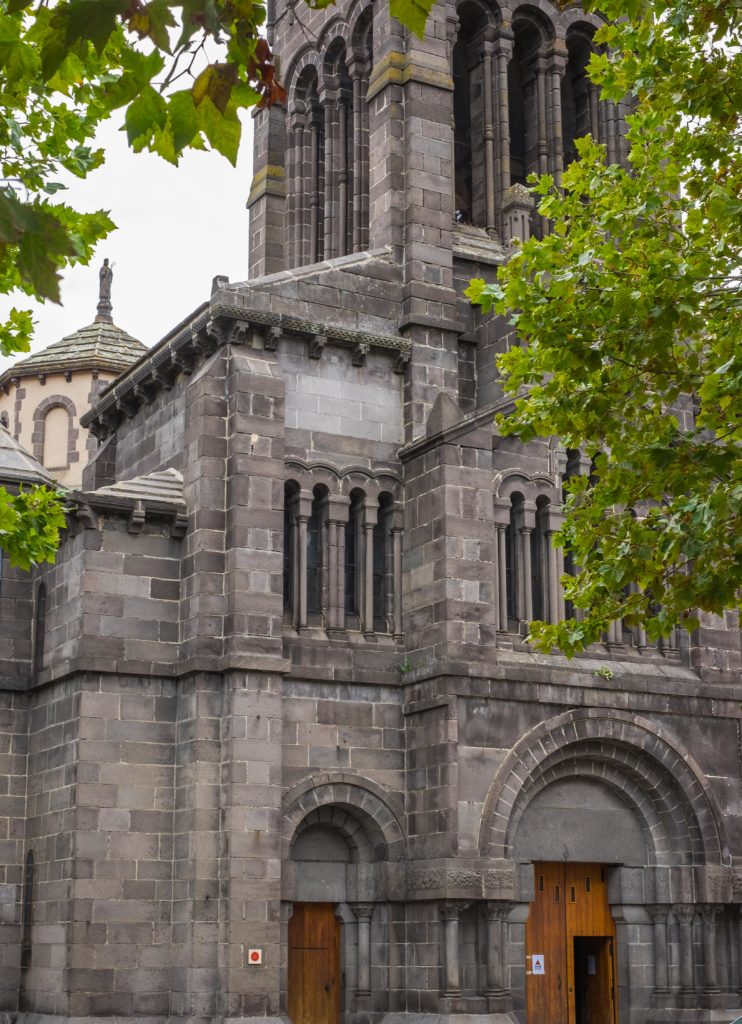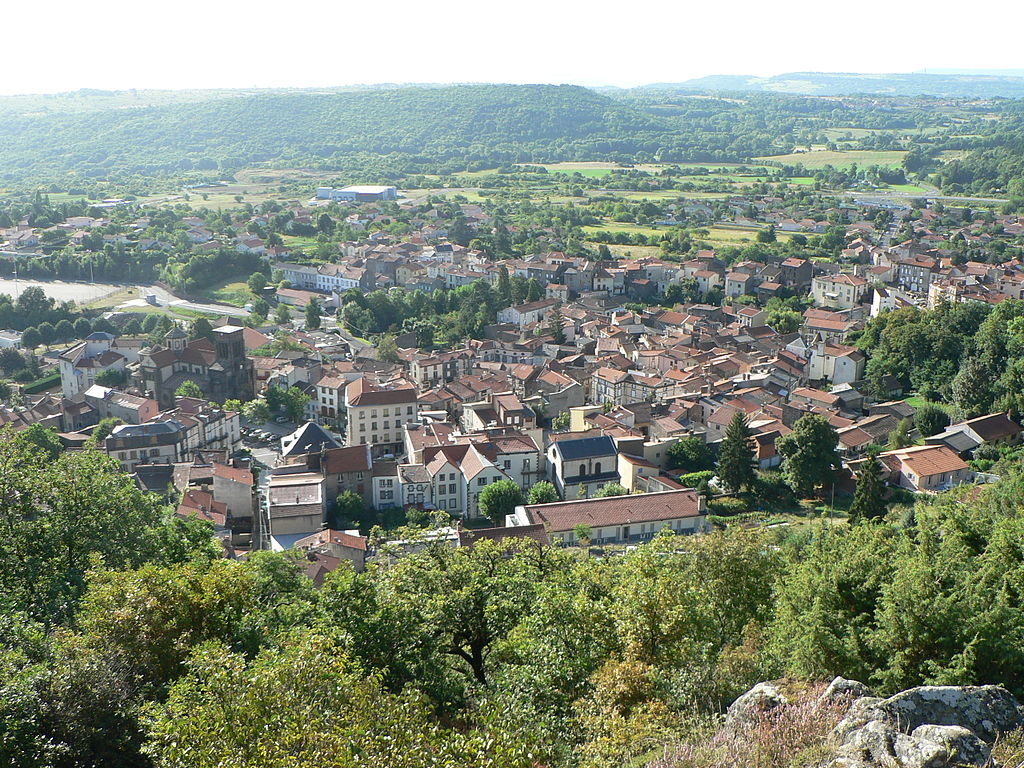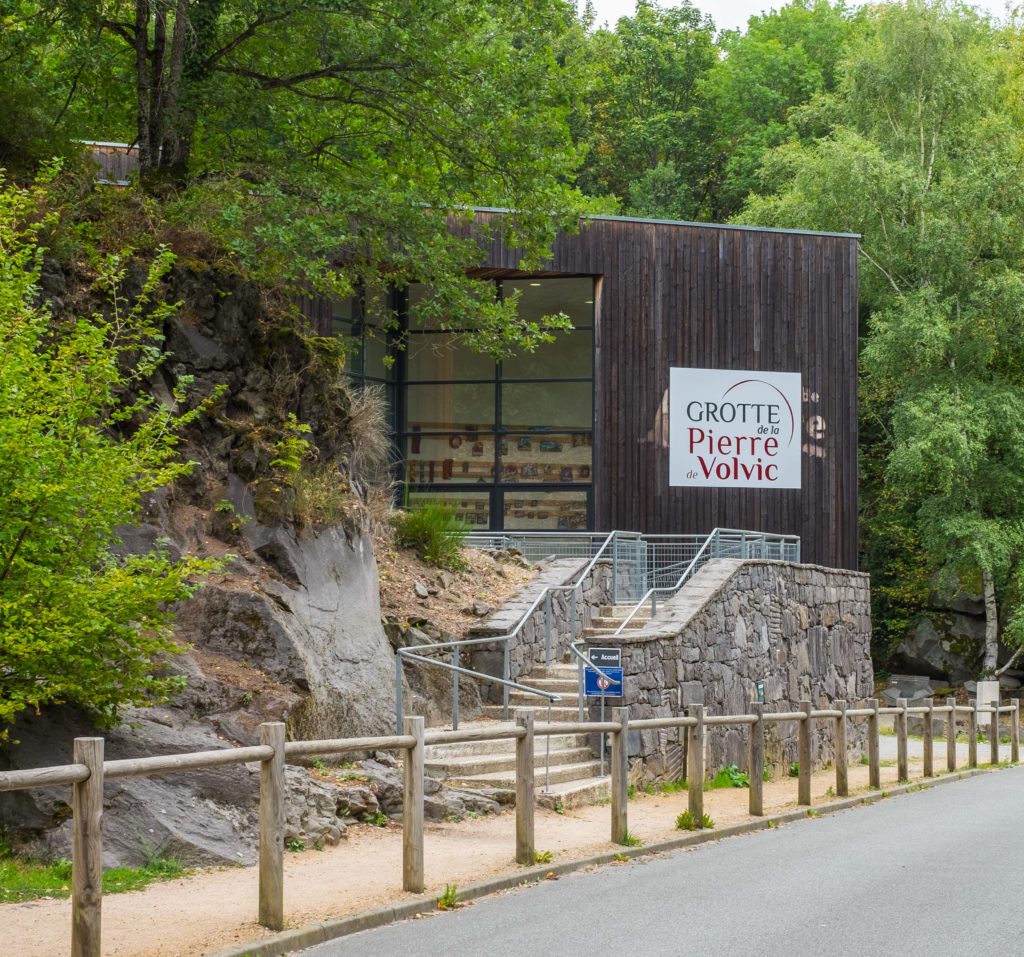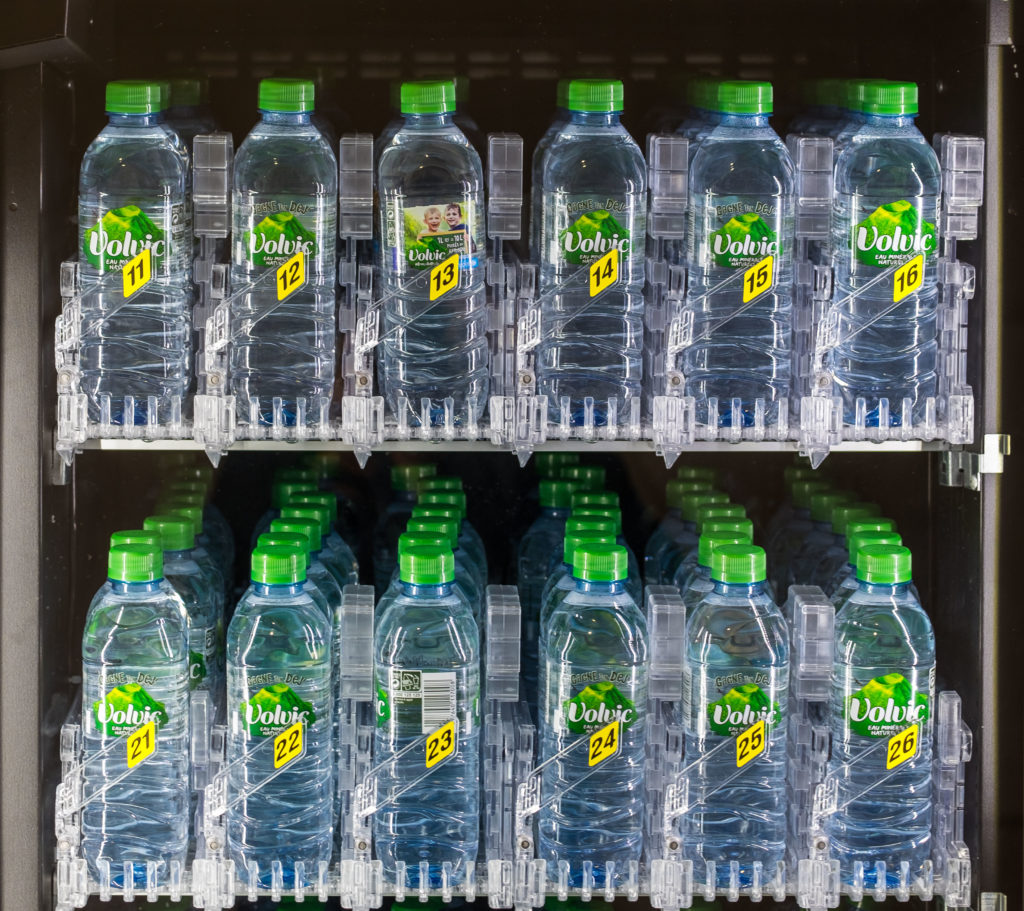The rock that colors a whole region
Drive into almost any town in the central Auvergne, and you’d be forgiven for thinking that there’s something dark and a little foreboding about it. It might take a moment, but you’d quickly arrive at the reason: many of the houses, the big public buildings, and the fountains in the central square all have the same gray-black tone. The somber air of the whole region comes from this pervasively common building material: the pierre de Volvic – lava rock from the village of Volvic.


You can see it particularly in the great Cathedral of Notre Dame de l’Assomption in Clermont-Ferrand, known to many as “the only black cathedral in France”. As you look at the dark stone blocks that make up the building, try imagining the labor required 760 years ago to cut each massive block and drag it over the 11 kilometers (7 miles) from Volvic to the sharp little hill in Clermont’s center.
And it’s not just in the great public buildings – everywhere you look there are Renaissance houses, 19th-century fences, and even modern statuary all cut from the same rich source of building materials: the lava quarries at Volvic. It’s strong, light (compared to other rocks) and reasonably durable. It can be carved into sculptures and ornate figures, and it can be enameled into lave émaillée; many of the old road signs, orientation plaques, and brightly-painted artworks you see in this part of France are based on this same ancient rock.



It’s also abundant. By the time the Puy de Nugère stopped erupting around 10,000 years ago, it had deposited 6 huge lava flows, most with at least 6 layers of stone and ash, spreading for miles all around the base of the volcano. The commune of Volvic is built on one of these broad, deep flows.



A trip to the source
Karen and I recently decided to recreate one of our favorite early trips by visiting the village of Volvic and touring the fine Grotte de la Pierre. The village itself is relatively unassuming, although it lies at the center of some interesting regional history. The church here – it’s “black”, too – sits on a site that dates back to the 7th century A.D., when a Bishop of Clermont was assassinated here, and an early church was built in his honor. That building was sacked by successive invasions of Saracens and Norman Vikings, before another church was constructed beginning in 1095. It was integrated into the vast network of the Abbey at Cluny, one of France’s great centers of power in the Middle Ages, and even today Volvic retains its membership in the Federation of Clunisian Sites.


The current Eglise Saint-Priest, sitting at one end of the little town’s main square, consists mostly of a 12th-century Romanesque structure with other pieces added in the 14th and 19th centuries. Not surprisingly, even the interior columns and the characteristic carved capitals are made of the dark local stone. Even the monumental statue of Notre Dame de la Garde that looms over Volvic (5.5 meters or 18 feet high) is carved from lava.

This little commune of around 4,500 people is otherwise unremarkable, although we were interested to learn that the Abbot Annéser brought 900 of his parishioners here to hide from the Nazi invaders in 1940. When the Gestapo came into town in 1944, looking for members of the Resistance hiding in the Hotel du Commerce, the chief officer of the German patrol was somehow killed; following the pattern that happened so often across France, the Gestapo took 17 hostages, deported them to prison camps, and burned down the hotel.
The 1st great treasure of Volvic: the lava quarries
It’s a short ride or walk from the town square to the Grotte de la Pierre – the “Grotto of Stone”. When you come – even if it’s the steamiest hot day in August – bring a coat, because the temperature inside the lava flow is 30 or 40 degrees (Farenheit) cooler than whatever is going on outside. (They will generously offer to loan you a blanket at the welcome desk if you look underdressed.)



This is one of those tourist sites in the deep heart of France that has been greatly improved over the years. When we first went down into the quarry 20 years ago, there was a live guide (only in French) and the presentation was dry and scientific. Now, though, you pass through several “stations” where films of the site’s history are narrated with good English subtitles, and the story is one of high drama, even romance.

It’s a story told in the voice of a 19th-century worker in the lava mines. He tells it in the form of a personal memoir about Jean Legay-Chevalier, “a quarryman, sculptor, inventor, farmer, viticulturist, teach…and lastly, discoverer of the famous Volvic water.” From the old tools and carts scattered around the site, you get a strong sense of the danger and difficulty these lava workers faced everyday – but also a powerful sense of the pride they felt in knowing that the stones they cut would be put to use in great churches, fine houses, municipal monuments, and sculptures around the world.
It’s fitting that this sense be conveyed so well in the narrative of the life of a quarryman. I came away with a profound admiration for these workers. But there’s more to it than that. The story you hear as you pass through the quarry is the story of the last 200 years – but you have to remember that the great “black Cathedral” in Clermont, the fine Renaissance houses in Montferrand and Riom, the medieval fountains that dot the Auvergne, were also quarried from this same deep lava flow. For me, the visit to the site evoked one of those “how was it even possible” moments as we contemplated the intensity of the labor required to achieve these masterpieces.

https://www.youtube.com/watch?v=Qpa58yV9ji0
The 2nd great treasure of Volvic : the water
But there’s another part of the story – did you catch it in the reference to Jean Legay-Chevalier as “discoverer of the famous Volvic water”? As the narrator of the Maison de Pierre’s tour elaborates, workers in the quarry were always aware of little drips and side flows of water in the site, but the heavy work of cutting the big stone blocks was mostly accomplished for decades by pumping water down into the quarry from the surface.

It was Legay-Chevalier’s genius to go looking for the source – and he found it in the springs flowing deep beneath the lava flows here. At first this water was harnessed primarily as a tool for cutting the rock – but it didn’t escape notice that this water was exceptionally pure and rich in minerals.
This is the source of the world-famous Volvic water, first bottled in 1938 and distributed now to more than 60 countries around the world. The company, now owned by the Danone Group, is the village’s biggest employer, running 2 bottling plants that produce of 1 billion bottles of water every year, according to the company.

Am impact felt around the world
For me, that’s the extraordinary part of the story of Volvic. This little commune, nestled into the smaller volcanic peaks in France’s Massif Central, has an impact that goes far beyond its peaceful, narrow streets. The stones produced here can be found in the sidewalks of Paris and in countless fine buildings around France. The water sold under the Volvic name can be found in supermarkets and vending machines on the other side of the planet.
It’s a story of ingenuity, of knowing how to profit best from what nature gave the town. Volvic is not necessarily a great tourist destination, although I do heartily recommend a visit to the Grotte de la Pierre or a tour of the water factory if these things interest you. But it is, for me, one of the most interesting stories I’ve found in the deep heart of France!
Have you encountered other places in your travels around France where natural gifts have been turned into sustainable commerce or some other kind of legacy? Have you ever tried the waters from Volvic? Please share your experience in the “comments” box below, and while you’re here please pass this post on to someone else by clicking on the button(s) for your preferred social-media platform(s).


One more interesting article, one more place on my list! Thank you!
Susan Green